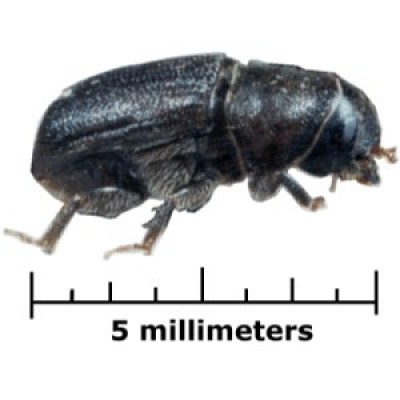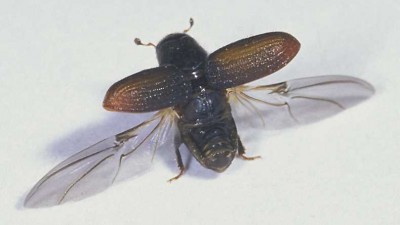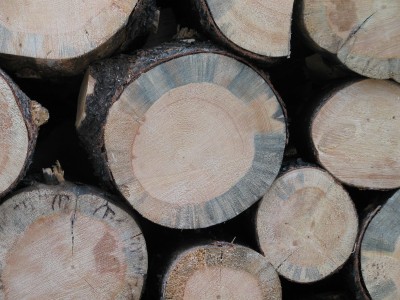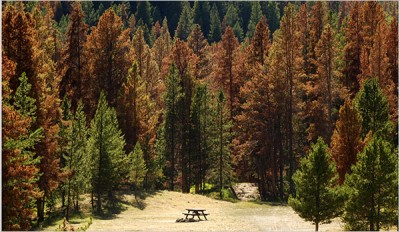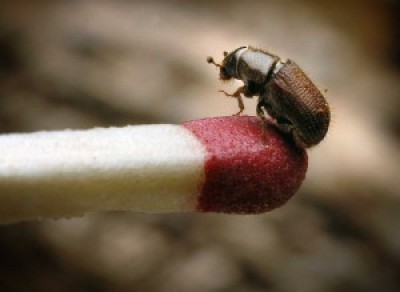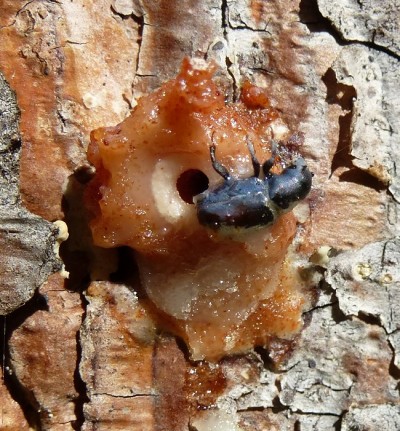Oh, the mountain pine beetle; a tiny creature that’s doing a whole lot of damage to our forests. If you’re from Alberta or British Columbia, you have probably heard about this troublesome little bug. And you may even know about how devastating this beetle has been to some forests, particularly to our neighbours to the west. If you’ve driven near BC’s pine forests, you may have already seen some of the victims; usually large groups of reddish pine trees.
Here are some quick facts about the mountain pine beetle:
Size: 5 mm
Method of travel: Wind. The beetle uses its wings to travel short distances, but can hitch a much longer ride in air currents.
Method of destruction: Fungus living in the beetles’ mouths. The fungus enters the trees and clogs the cells, making the trees unable to absorb water and nutrients.
Victims: In 2012, over 99,000 Alberta pine trees were infested with the beetle. All species of pine are susceptible to attack.
In addition to killing our valued pine trees, the mountain pine beetle’s destruction also results in:
– The closing of recreational trails due to the frequency of dead trees falling
– An increased incidence of fire because of the dead, dry trees left by the pine beetle
– Vulnerable economies in Alberta’s 50 forest communities
– Threatened watersheds, which impacts water quality, fisheries, and wildlife habitat
Historically, the mountain pine beetle has not ventured very far past the British Columbia–Alberta border; it was usually only found in BC and in small pockets in south-west Alberta. So why has this beetle only recently become a big issue? Here are the main reasons:
Our winters aren’t cold enough to kill enough beetles to keep their population under control. Pine beetles live beneath the bark of the tree, giving them protection from harsh winter conditions. Pine beetles also have a natural “anti-freeze” in their bodies, allowing them to tolerate very cold temperatures. As Alberta winters get warmer, more and more beetles are making it through the winters, resulting in a growing population.
We are really good at putting out forest fires, so our forests are unnaturally old in Alberta. Putting out fires can be a great thing, because fires can do a lot of damage to trees, animals, and communities. But forest fires also provide a lot of benefits to our forests. One of these benefits is ensuring a healthy distribution of tree age in our forests.
For many reasons, we preserve our trees so we can see them grow into maturity. But old trees (80 years and up) are more susceptible to pine beetle attack. This is because older trees are not able to produce as much sap as younger trees, and sap production is the main way trees protect themselves from intruders. If we have too many old trees in our forests, the beetles can easily find shelter in these weaker trees, allowing them to reproduce. Each female pine beetle that enters a pine tree produces about 20 offspring, so it’s important that we don’t have a disproportionate number of old trees in our forests because it aids pine beetle reproduction.
Fires help to renew our forests so they don’t get too old. Forest management professionals work to find a balance that allows our forests to benefit from forest fires without being completely destroyed by them.
Because they can travel long distances in the wind, pine beetles are now starting to pop up Saskatchewan, a place where traditionally they have not been seen. Unfortunately the problem is likely going to get much worse before it gets better. There are so many of these tiny but powerful beetles out there right now, and lots of pine trees for them to inhabit. Other than lighting the forests on fire to burn the beetles, there aren’t any other ways of getting rid of them. Unless we find another method, the beetle population won’t decrease until there aren’t enough trees left to sustain them.
To learn more about this dangerous little beetle, check out these links:
